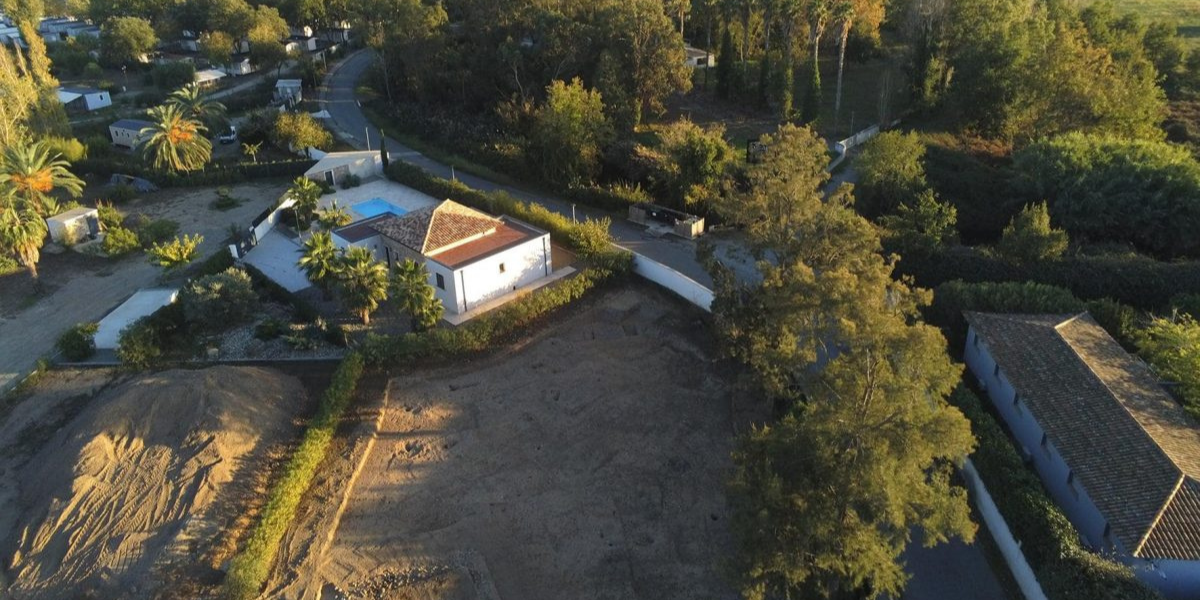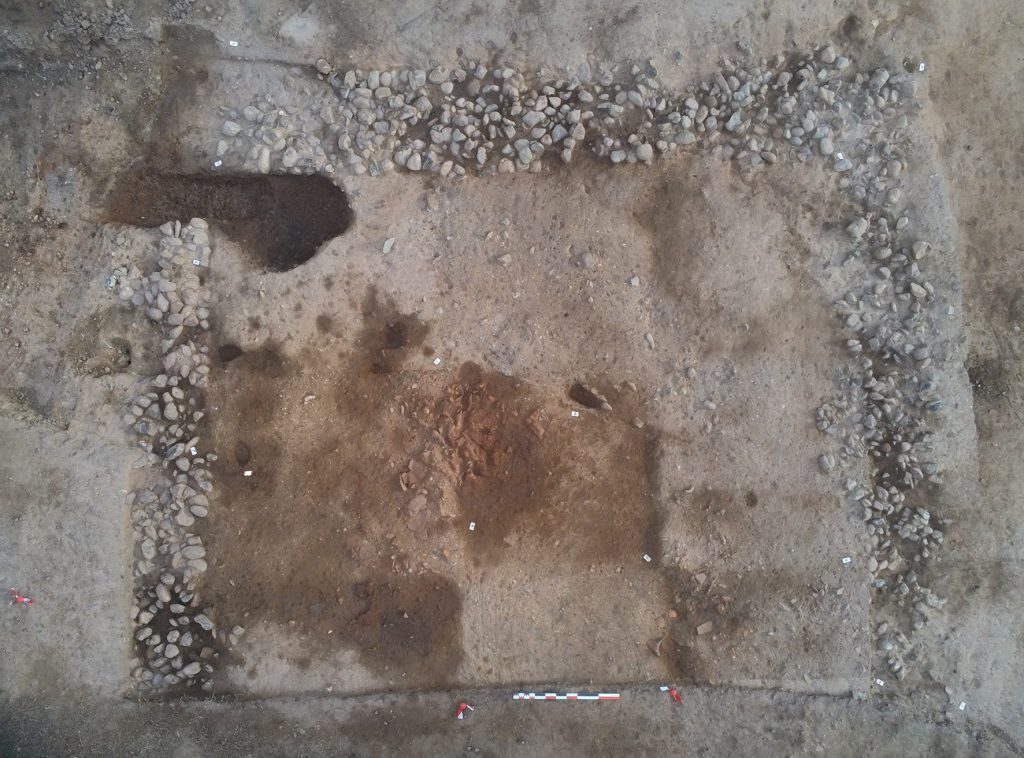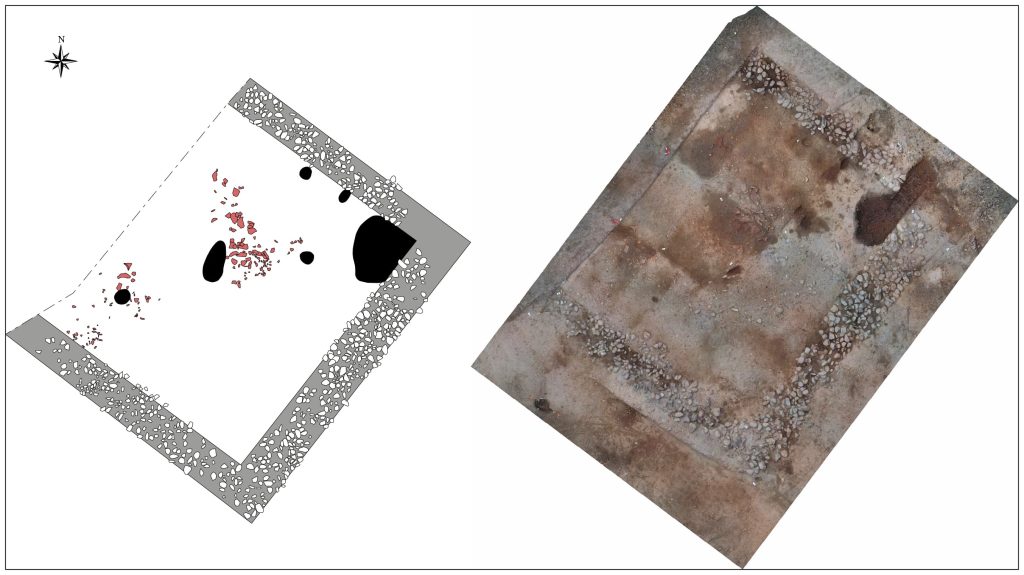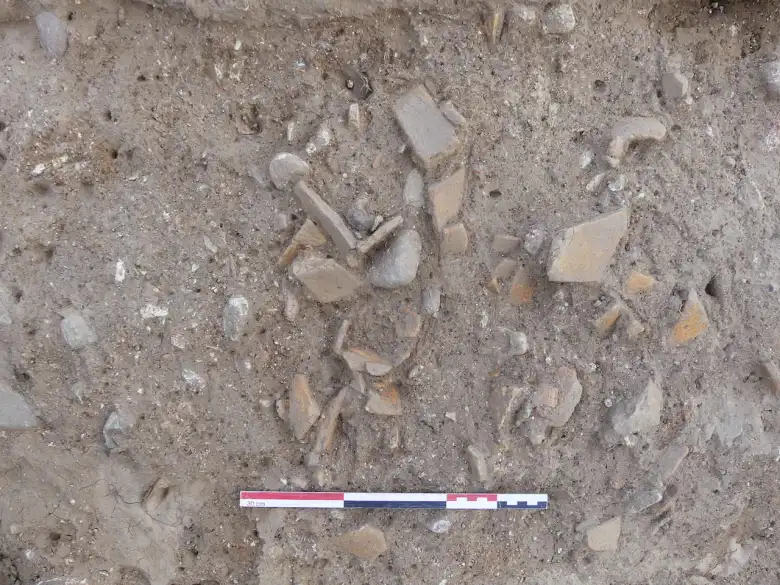
Archaeologists discover first Etruscan house structure in Corsica
Archaeologists have discovered on the east coast of Corsica the first Etruscan house structure dating from the 6th to 4th centuries BC.
Archaeologists from Inrap, the French National Institute for Preventive Archaeological Research, uncovered the Etruscan house structure as part of a project to build a detached house in the municipality of Ghisonaccia.
Until today, Etruscan tombs had been found in Corsica. However, no house structure had been found.
“This discovery constitutes a privileged proof of the existence of this pre-Roman civilization on the island, due to the richness of its ceramic furniture and the fact that it is the first indigenous settlement excavated in Corsica linked to the Etruscan culture,” Inrap archaeologists said.

The discovery occurred during a single house construction project on a 605 m² plot in the Chiusevia neighborhood, 800 meters from the Tyrrhenian Sea and 3.5 km east of Ghisonaccia. The project lasted from mid-October until early December 2023.
The excavation, carried out under the supervision of the Regional Archaeological Service (DRAC of Corsica), identified a structure with pebble foundations on a gently sloping alluvial terrace. The house was built on a plateau. Located on a natural plain in the north of the site, it is oriented northwest-southeast and has an interior space of at least 34 m² defined by three pebble slabs. The surface of the building is at least 50 m².

Outside the house there were traces of posts, suggesting the use of structures made of wood or perishable materials such as reeds.
The irregular arrangement of the wall foundations, composed of pebbles of different sizes bound by silty sediments, and the sloping walls suggest a simple but efficient construction method.
Archaeologists found about 45 kg of pottery sherds. These sherds were homogeneous and largely undecorated storage vessels. The artifacts were identified as common Etruscan ceramics, reflecting an occupation between the 6th and 4th centuries BC.
The homogeneous corpus is characterized in particular by the absence of locally modeled ceramics and the absence of refined Etruscan productions, suggesting a special and differentiated use of these vessels, the French National Institute for Preventive Archaeological Research said in a July 9 news release.

They added that the combination of typochronological studies, organic marker analysis and petrographic studies will allow a more precise definition of the chronology and characteristics of this Etruscan settlement in Corsica, placing it in the broader context of cultural and commercial interactions in the Mediterranean.
About twenty meters south of the structure, a rather large ditch, 1.70 meters wide and 15 meters long, was found. This ditch may have been used to collect water from the Alzetta stream and contribute to the settlement’s water supply. The ditch could also have been used to define the boundaries and layout of the site.
The ancient Etruscan house found in Corsica is the first of its kind for the island, the institute said.
Cover Photo: Aerial view of the Ghisonaccia region with the Alzetta River flowing into the Tyrrhenian Sea in the background. Photo: B. Chevaux, Inrap
You may also like
- A 1700-year-old statue of Pan unearthed during the excavations at Polyeuktos in İstanbul
- The granary was found in the ancient city of Sebaste, founded by the first Roman emperor Augustus
- Donalar Kale Kapı Rock Tomb or Donalar Rock Tomb
- Theater emerges as works continue in ancient city of Perinthos
- Urartian King Argishti’s bronze shield revealed the name of an unknown country
- The religious center of Lycia, the ancient city of Letoon
- Who were the Luwians?
- A new study brings a fresh perspective on the Anatolian origin of the Indo-European languages
- Perhaps the oldest thermal treatment center in the world, which has been in continuous use for 2000 years -Basilica Therma Roman Bath or King’s Daughter-
- The largest synagogue of the ancient world, located in the ancient city of Sardis, is being restored











Leave a Reply